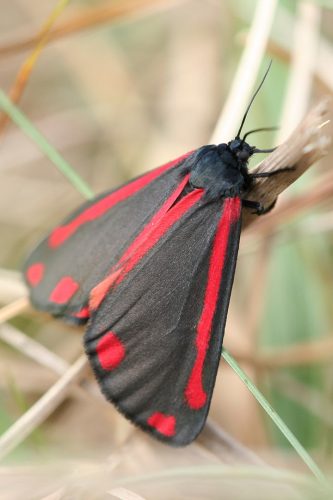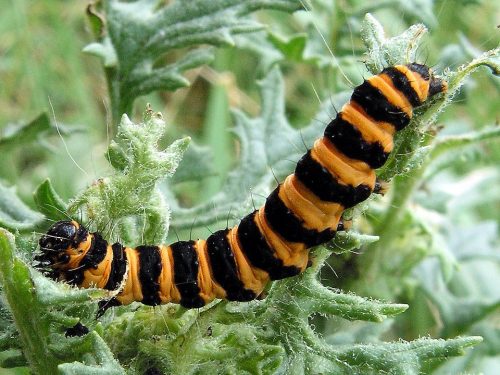Cinnabar, this butterfly with a wing length of + 35 mm belongs to the moths. Yet this brightly colored butterfly is also active during the day.
Do not confuse with:
Six-spot burnet (Zygaena filipendulae)
Five-spot Burnet (Zygaena trifolii)
Cinnabar (Tyria jacobaeae). This diurnal butterfly with a wing length of + 35 mm belongs to the moths (Heterocera). Yet this brightly colored butterfly is also active during the day. Cinnabars fly from early April to mid-August.
Common ragwort (Senecio jacobaea) is the host plant of the cinnabar. Common ragwort is found on dry sandy soils and is native to northern Eurasia.
The strikingly colored caterpillars are active from July to September and live primarily on the flowers of common ragwort. They can eat a plant down to the main stem.
The cinnabar overwinters as a pupa in the ground.
Toxic
The caterpillars fed on the poisonous ragwort and are thus poisonous themselves. The toxic compounds in the caterpillar also enter the butterfly via the pupa, which is therefore also toxic. Birds do not eat the caterpillars and moths.


